Led Zeppelin, the Band that Grew out of The Yardbirds
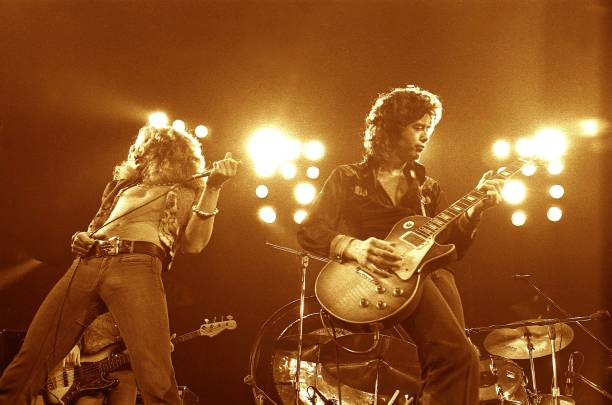
Often hailed as one of the most innovative and influential rock bands of all time, Led Zeppelin's legacy continues to reverberate through the annals of music history. Formed in 1968, the band consisted of four distinct personas whose unique talents and backgrounds merged to create a sound that was both revolutionary and timeless. Allow me to take you on a journey through the formation of Led Zeppelin, delving into the vibrant history of each member: Jimmy Page, Robert Plant, John Paul Jones, and John Bonham.
Led Zeppelin's genesis is rooted in the pages of another band called The Yardbirds, to which a young guitarist named Jimmy Page belonged. Jimmy Page, born in Heston, Middlesex, England, was a sought-after session musician in the early '60s before stepping into the spotlight as the final lead guitarist for The Yardbirds. Recognized for his creative brilliance, Page had the vision of forming a supergroup as The Yardbirds began disbanding, eventually planting the seeds for Led Zeppelin.
Enter Robert Plant, a native of West Bromwich, England, and a burgeoning vocalist who was making waves in local bands. Plant's powerful and emotive voice caught Page's attention after an introduction by Terry Reid, a fellow musician who had turned down Page's initial offer to join the band. Robert Plant's soulful tone and magnetic stage presence would soon become synonymous with Led Zeppelin's identity.
In search for the perfect fit for the band's rhythm section, Plant suggested his former bandmate, John Bonham. Nicknamed "Bonzo," Bonham was a drummer from Redditch, Worcestershire, whose energetic and thunderous playing style was as iconic as it was transformative. Bonham's dynamic drumming added an explosive edge to the group, propelling the band's sound to unprecedented levels.
The final piece of the puzzle was John Paul Jones, an accomplished multi-instrumentalist and arranger from Sidcup, Kent. Jones had crossed paths musically with Page during his session work and collaborations. His dexterity with bass guitar, keyboards, and mandolin, coupled with his arrangement skills, provided the essential backbone to Led Zeppelin's eclectic sound. Thus, the lineup was complete, and the musical alchemy could begin.
With the lineup solidified, the newly formed group embarked on a Scandinavian tour under the provisional name "The New Yardbirds" to fulfill contractual obligations left by the previous band. Shortly afterward, drawing inspiration from Keith Moon's jestful prediction about the band's future, they adopted the name Led Zeppelin, a moniker that would soon resonate across the world.
Led Zeppelins First Album Arrives!
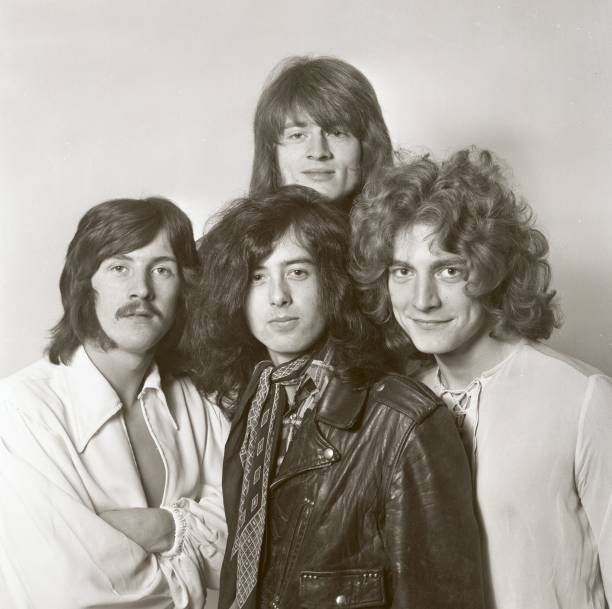
Led Zeppelin's eponymous debut album, released in January 1969, was an immediate triumph. Recorded at Olympic Studios in London, the album showcased a fusion of blues, rock, and folk—a sound that was both experimental and raw. Tracks like "Good Times Bad Times" and "Dazed and Confused" introduced audiences to a sound defined by powerful guitar riffs, intricate rhythms, and haunting vocals.
The band quickly followed up their debut with their second album, "Led Zeppelin II," later that year. The album catapulted them to superstardom, with "Whole Lotta Love" achieving iconic status. The intensity and complexity of their sound were matched by the growing fervor for their live performances, which were becoming legendary on their own terms.
Beyond their commercial success, Led Zeppelin was pioneering in its refusal to release singles, preferring listeners to experience full albums. This move, championed particularly by Page, emphasized the band's dedication to the artistry of their music and their commitment to pushing the creative boundaries.
Through the '70s, Led Zeppelin continued to evolve. Their third album "Led Zeppelin III," released in 1970, showcased a more acoustic and folk-influenced direction. While it initially met with mixed reviews, it demonstrated the band's versatility and willingness to explore new musical territories.
By 1971, Led Zeppelin had reached the zenith of their innovative artistry with the release of "Led Zeppelin IV," an untitled masterpiece that remains one of the best-selling albums of all time. Songs such as "Stairway to Heaven" became anthems of the rock era, and the album's diversity further solidified their place in music history.
The individual talents of Jimmy Page and Robert Plant, John Bonham, and John Paul Jones continued to harmonize brilliantly. Page's keen production sense managed to capture and enhance the vibrant sounds they created, while Plant's lyrical themes explored mysticism, romance, and the human condition, complemented by Bonham's formidable drumming and Jones’s masterful contributions.
However, it wasn't just about albums—it was about live performances. Led Zeppelin's concerts were more than musical events; they were cultural touchstones. Known for extending their songs into epic, improvisational jams, their shows redefined the concert experience and left an indelible impact on audiences and artists alike.
As the '70s progressed, Led Zeppelin continued to churn out seminal records. "Houses of the Holy" in 1973 broadened their palette with funk and reggae touches, while 1975's "Physical Graffiti" demonstrated their creative peak with a sprawling double album of original material.
The latter part of the 1970s saw Led Zeppelin undergo significant challenges, both personal and professional. Tragedies, such as the death of Plant's son and Bonham's struggles with alcohol, unraveled the band's momentum. Yet, they persevered, releasing "Presence" in 1976 and the experimental "In Through the Out Door" in 1979.
Led Zeppelin Comes To a Sudden End
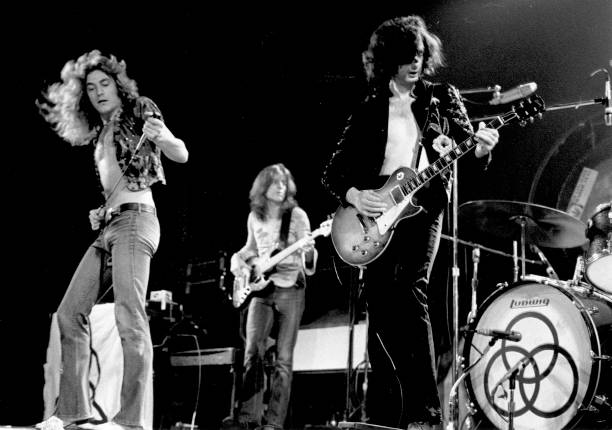
1980 was a turning point; John Bonham's untimely death on September 25 halted Led Zeppelin's journey. The remaining members chose to disband rather than attempt to replace Bonham, feeling that the essence of Led Zeppelin could not be captured without his singular presence.
Led Zeppelin's influence on rock music is unparalleled. They have served as a template for countless bands that followed, inspiring artists across genres and generations. Their ability to span blues, rock, folk, and even metal remains unmatched, marking them as pioneers in genre-blending.
Each member of Led Zeppelin has continued to influence the music world beyond the band's lifespan. Jimmy Page's guitar techniques and innovations have been studied and emulated by countless guitarists, while his prodigious production work continues to be a benchmark in recording.
Robert Plant carved out a successful solo career, exploring diverse musical territories from world music to bluegrass. His iconic frontman status remains unchallenged, with his vocals providing a blueprint for expressive rock singing.
John Paul Jones has quietly amassed a broad influence, working as a producer and composer, arranging songs for artists like REM and contributing to projects with Them Crooked Vultures. His versatility remains a testament to his ingenuity and adaptability.
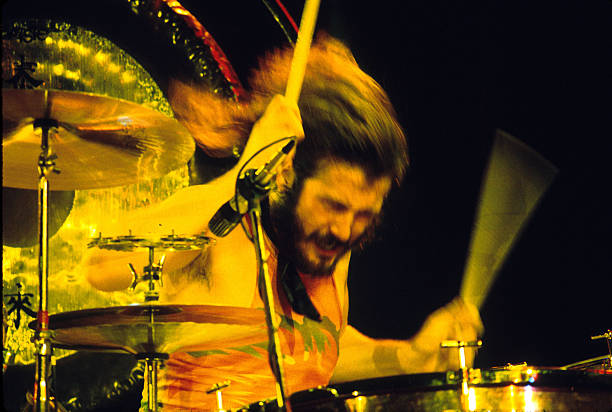
Though John Bonham's life was tragically cut short, his powerful drumming left a lasting legacy that continues to shape the rhythm of rock music. Known for his speed, feel, and power, Bonham's techniques are still regarded as a high standard for drummers today.
Led Zeppelin's story is not merely one of musical talent and fame, but of four extraordinary individuals who collectively forged a new path in rock music. Their pioneering spirit, underpinned by the distinct contributions of each member, set new standards and continues to inspire new generations of musicians and fans alike. As rock music lovers and vinyl enthusiasts delve into their history, they uncover a complex tableau of innovation, influence, and enduring artistry.
Led Zeppelin Albums
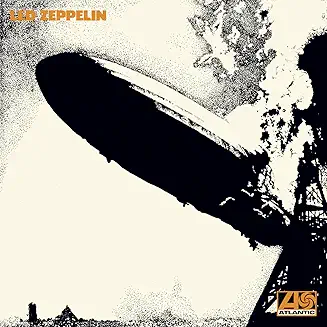
Led Zeppelin
The first album released by Led Zeppelin, It was released on 13 January 1969 in the United State and on 31 March 1969 in the United Kingdom by Atlantic Records.
The album was recorded in September and October 1968 at Olympic Studios in London, not long after the band's formation. There is a nice mix of original material and remakes and rearrangements of contemporary blues and folk songs. The sessions took place before the group had secured a recording contract and totalled 36 hours; they were paid for directly by Jimmy Page, the group's founder, leader and guitarist, and Led Zeppelin's manager Peter Grant, costing £1,782 (equivalent to £37,047 in 2023) to complete. The tracks were mixed by Page's childhood friend Glyn Johns, and the iconic album cover showing the Hindenburg disaster was designed by George Hardie.
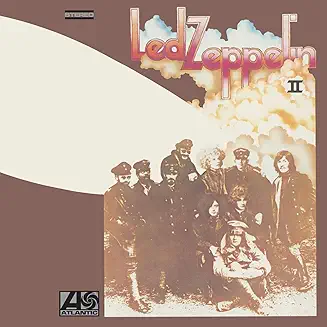
Led Zeppelin 11
Led Zeppelin II is the second album by Led Zeppelin. It came out on 22 October 1969 in the United States and on 31 October 1969 in the United Kingdom by Atlantic Records. Recording sessions for the album took place at several locations in both the United Kingdom and North America from January to August 1969. The album's production was once again credited to the band's lead guitarist and songwriter Jimmy Page, and it was also Led Zeppelin's first album on which Eddie Kramer served as engineer.
This album showed the bands changing musical style with blues-derived material and their guitar riff-based sound. It has been described as the band's heaviest album. Six of the nine songs were written by the band, while the other three were reinterpretations of Chicago blues songs by Willie Dixon and Howlin' Wolf. One single, "Whole Lotta Love", was released outside of the UK (the band would release no UK singles during their career and peaked as a top-ten single in over a dozen markets around the world.
This great album was a commercial success and was the band's first album to reach number one on charts in the UK and the US. The album's cover designer David Juniper was nominated for a Grammy Award for Best Recording Package in 1970. On 15 November 1999, the album was certified 12× Platinum by the Recording Industry Association of America (RIAA) for sales reaching 12 million copies in the US. Since its release, various writers and music critics have cited Led Zeppelin II as one of the greatest and most influential albums of all time. It was also the first Led Zeppelin album I bought, when I should have been saving my money for our first home!
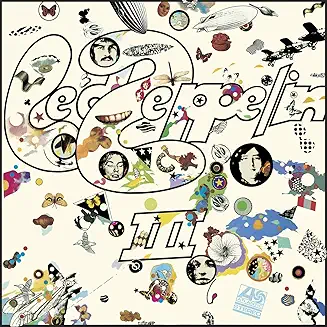
Led Zeppelin 3
Led Zeppelin III is the third album by the English rock band Led Zeppelin, released on 5 October 1970. It was recorded in three locations. Much of the work was done at Headley Grange, a country house, using the Rolling Stones Mobile Studio. Additional sessions were held at Island Studios and Olympic Studios in London. The range of instruments played by the band was greatly enhanced on this album, with Jones especially emerging as a talented multi-instrumentalist, playing a wide range of keyboard and stringed instruments, including various synthesizers, mandolin and double bass, in addition to his usual bass guitar. As with prior albums, Page served as producer on the album, with mixing done by Andy Johns and Terry Manning.
Check Out Led Zeppelins Vinyl Albums HERE
Enjoy this site? Share with friends!
Zep In Action......
..Whole lotta Love
and Immigrant Song
